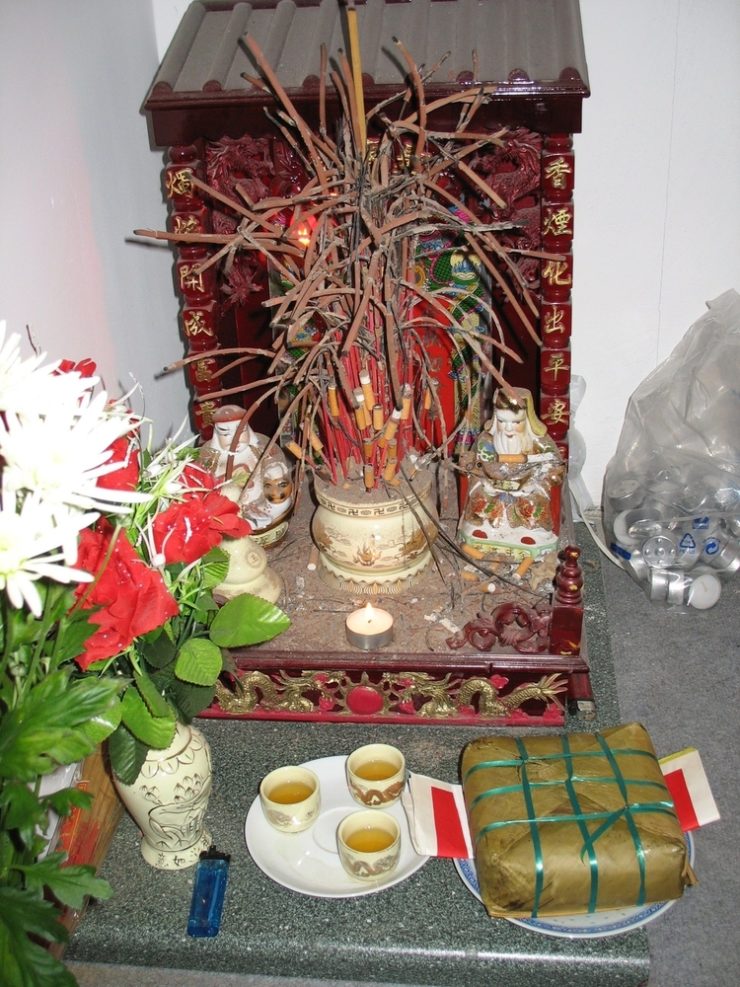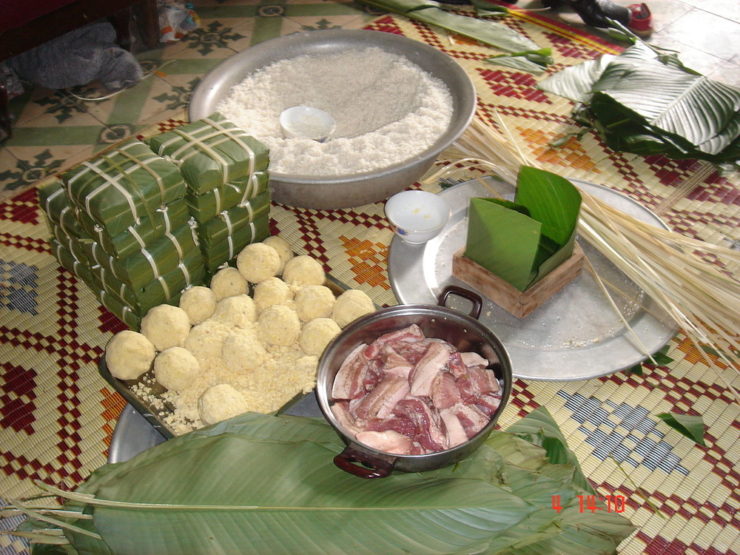Gertrüd Hüwelmeier
Religious practices in contemporary Vietnam involve cooking for gods, deities, ancestors and spirits at various localities and in multiple contexts. There are manifold relationships between the living and the dead in late Socialist Vietnam, and food offerings are part of the communication between diverse realms. By burning incense, devotees offer food and transmit prayers to the otherworld at altars and shrines, and in a response, spirits bestow lộc, blessed food, which is then distributed and consumed by the ceremonies’ participants. Religion in Vietnam is mostly polytheistic in nature. Ancestor veneration and spirit worship are influenced by and mixed with major religious traditions such as Buddhism, Daoism, and Confucianism. The wide variety of rituals in overlapping cosmologies and pantheons are characterized by food and collective meals, which are intrinsic to Vietnamese religious practices. Performed during the annual cycle and according to the lunar calendar, food offerings play a vital role in important family events such as engagement, wedding and funeral rites, whereby incense is burned and food is presented to the ancestors at the familial altar at home. Forbears need to be informed about family news and are invited by the offspring to partake in particular ceremonies.
For Vietnamese imaginaries, the otherworld is a mirror image of the world of the living. Family members perform their filial duty by bringing offerings to the ancestral altar on the 1st and 15th of each month, according to the lunar calendar. Religious practitioners donate food, fruit, flowers, alcohol, cigarettes, and votive paper offerings to let the ancestors, spirits and gods smell, see, and taste from what people have purchased in the market and what they have cooked in their kitchens. While incense is burning, spirits are imagined to come into presence and partake in the ceremony, viewing, smelling, and tasting food and fruit. In return, as it is thought, spirits will protect the living.
Prior to the New Year Festival, for example, the dead will be invited to return home to participate in family gatherings and lavish meals. The most important food on the occasion of the New Year Festival is bánh chưng (a special rice cake made from sticky rice, mung beans, pork and other ingredients, and covered with green leaves), which is traditionally prepared prior to this event. Rice cake is also offered to other cosmological entities , such as to the spirits of the place, which protect the territory of the land, the house or the shop.

Figure 1: Altar in a shop, dedicated to the ”god of the earth” and the ”god of wealth”, with rice cake offering. Copyright: Gertrud Hüwelmeier.
Bánh chưng is conceived as symbolizing the cosmos, rice as nutritional basis for mankind, mung beans being associated with the garden, and pork associated with the pigsty next to the house, while green leaves grow in the forest.

Figure 2: The prepared ingredients of Bánh Chung. Source.
After nicely decorating the dishes at the altar, people will burn incense and pray. While incense is burning, it is believed that spirits will come into presence, smell, see and taste the devotional offerings. At the ancestor altar, chopsticks will be placed next to the bowls, so that the spirits can enjoy the meal just like the living. After incense has burned down, family members will pick up the food from the altar to eat the now blessed food (lộc), such as boiled chicken, sticky rice, fruit or other nourishment, depending on what kind of ritual is celebrated.
The study of food in religious matters is a complex issue and involves various activities such as going to the market, cleaning the food, cooking, decorating shrines and altars as well as presentation, performance and consumption. Vietnam’s spirit world is a hungry one and therefore needs food and other objects to be presented by the living. There is no clear boundary between the living and the dead, but a perpetuation of being. Interactions between the living and various kinds of deceased are embedded in a complex web of care, in a ritual economy, characterized, among other things, by food and foodways. Not only family ancestors, but spirits of all kinds, such as those of national heroes, war dead, or spirits venerated in trance mediumship ceremonies, are believed to be affected by visual, auditory, haptic, olfactory, and gustatory senses and sensations.
Gertrud Hüwelmeier
Acknowledgement
I am an anthropologist and senior researcher at Humboldt-University Berlin. From 2006 onwards, I have been conducting ethnographic fieldwork on religious practices in Vietnam and among Vietnamese in Germany. I would like to thank the German Research Foundation (DFG) for funding my research over the years, such as a research project on “Religion, Media and Materiality. Spiritual Economies in Southeast Asia” (HU 1019/ 4-1). I am grateful to Birgit Meyer, who invited me to the “Religious Matters” programme at the University of Utrecht to work on “Food for the Spirits” in October 2019. I would also like to thank the organizers and participants of the conference “Gastro-politics and Gastro-Ethics of the Sacred and the Secular in Contemporary Plural Societies”, (Meertens Institute, Amsterdam. 13-15 November 2019), for stimulating comments on my presentation “Feeding the Spirits – Cooking, Offering and Reclaiming Lộc in Late Socialist Vietnam”.
